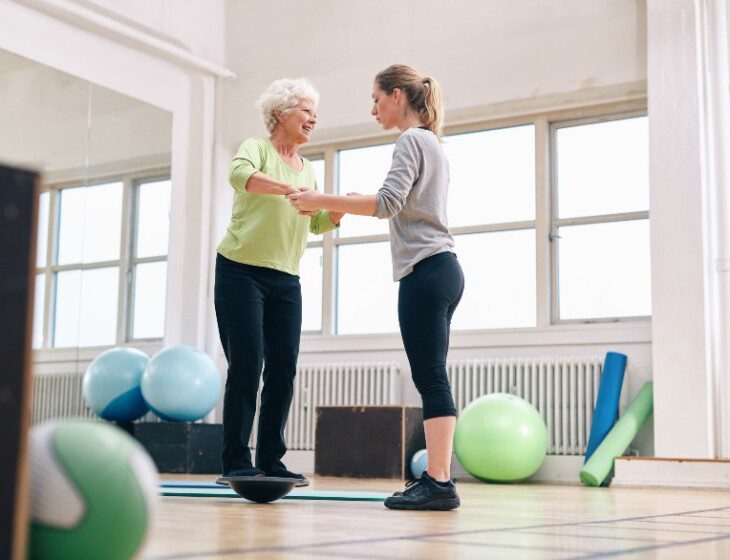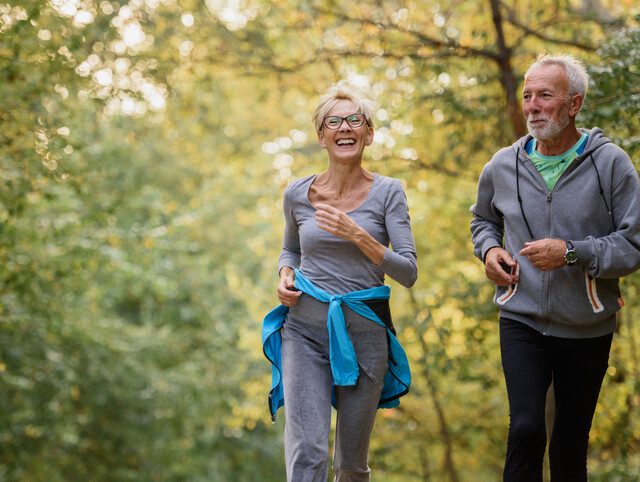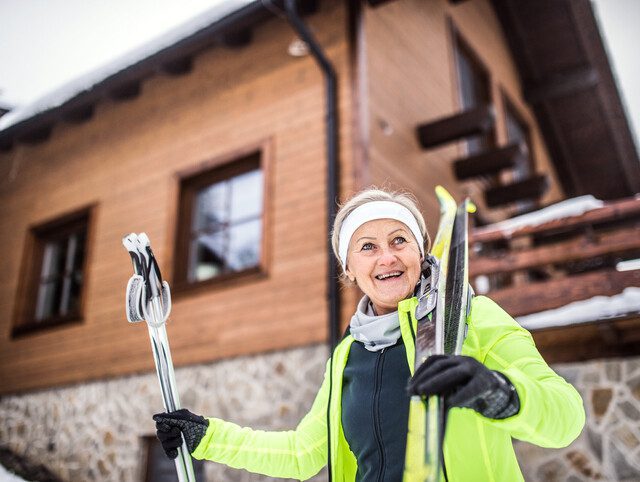Bodies change as we age, and this can sometimes impact our day-to-day mobility. One of these common changes happens to our balance. According to the National Council on Aging, approximately 1 in 4 seniors aged 65+ experience a fall every year, often related to trouble with balancing.
Luckily, seniors can take a proactive approach to maintaining their independence and balance through exercise and strength training. In this article, we’ll discuss factors that may contribute to balance issues in older adults and give you some senior balance exercises that can help. Always be sure to speak to a doctor before starting a new exercise program, which we will also discuss more below.
Causes of Senior Balance Problems
Difficulties with balance for seniors can be caused by a number of factors, ranging from new medication or health conditions to decreased efficiency in blood circulation. Older adults, especially if they’re less active or have chronic health conditions, may also experience a decrease in muscle mass and strength. The National Institute on Aging and Health In Aging list the following as other potential medical causes of balance decline in seniors:
- Inner ear problems
- Diabetes
- Blood pressure
- Vision problems
- Joint inflammation or pain
- Anxiety
- Postural hypotension
- Dehydration
Though some causes of a loss of balance in seniors may be unavoidable, engaging in balance training exercises can help strengthen your body and improve your overall balance to minimize the effects of these conditions.
Balance Assessment for Seniors
Before starting any exercise program, it’s important to talk with your doctor to make sure you’re fit to begin. As you reflect on your balance, you can ask yourself the questions below from the Activities-Specific Balance Confidence Test as part of your overall assessment.
How confident are you that you will NOT lose your balance if you
- Walk around the house?
- Walk up or down stairs?
- Bend over and pick up a slipper from the closet floor?
- Reach for a small can off a shelf at eye level?
- Stand on your tiptoes and reach for something above your head?
- Get into or out of a car?
- Walk up or down a ramp?
- Walk outside on icy sidewalks?
Once you and your doctor have thoroughly reviewed your risk factors, you can begin balance exercise training – if approved by your physician.
8 Senior Balance Exercises to Try
The number one rule to remember when you begin any exercises to improve balance for seniors is to do what you can now, then work toward new goals for hold times and repetitions. Everyone’s health and strength is different!
- Single Leg Lifts: Stand behind a steady, sturdy chair and place your hands on the back. Lift one foot off the ground and balance on the other one. Hold it for as long as you can, and then switch. Your goal is 1 minute for each leg.
- Heel-to-Toe Walk: Put your left foot in front of the right so they touch heel to toe. Put weight first to the heel of the front foot, then to the toes. Repeat with your right foot and so on while moving forward. Try to take 20 steps in this fashion.
- March in Place: This one is great for a little cardio as well as balance and coordination. Hold on to a counter or sturdy chair with one hand, stand up straight, and lift one knee up at least to calf level ” higher if you can. Alternate legs, lifting and lowering 20 times.
- Toe Lifts: Yes, a strong set of toes is essential for balance. For this exercise, stand up straight and keep your arms out in front of you, either placed on a counter or holding on to a chair back. Slowly raise up on your toes as high as you can, then gently lower back down to flat feet. Try not to lean forward as you raise up and down. Your goal is 20 times.
- Staggered Standing: Similar to the “heel-to-toe” exercise, staggered standing has you hold your stance instead of advancing forward. Stand with your feet together with your hands at the sides. Step forward with one foot and hold the position for 10 seconds. Alternate stance with the other foot and repeat 20 times total.
- Sit-to-Stand: To do this one, sit and scoot your hips to the edge of your chair. Bring your toes back so they’re lined up under your knees, and stand up. You can use your arms to push up off the chair. To sit down, bend a little at your knees first. This pushes your hips toward the chair, allowing you to lower your body to the seat. Pause and repeat. Do this exercise up to 3 to 10 times a day if you can.
- Reach Around the Clock: This one is great for flexibility as well as balance. In this exercise, you imagine you’re at the center of a clock; 12 is out front, 6 is in the back. Use your left hand to hold onto a chair and lift your left leg off the ground. Use your right hand to reach out to each key “position” on the clock, 12, 6, 3, and 9. Keep focused straight ahead, and repeat each arm/leg combo twice.
- Side and Back Leg Raises: For side leg raises, stand behind a chair, feet slightly apart. Holding on to the chair, slowly lift your right leg to the side. Your back should stay straight, eyes and toes forward. Repeat 10 to 15 times per leg. For back leg raises, same position, but lift one leg straight back with toes pointed and without bending your knee. Pause, then slowly lower. Repeat 10 to 15 times per leg.
Find Your Balance with Friendship Village of Bloomington
At Friendship Village of Bloomington, a premier senior living community located near Minneapolis, Minnesota, we’re focused on helping you live your best life. This includes helping you stay strong, confident, and independent by remaining active. In addition to physical therapy and rehabilitation, seniors at Friendship Village can enjoy a range of activities and group classes that keep fitness fun and engaging. If you’d like to learn more about the health services we offer, simply complete the contact form at the bottom of this page, and we’ll get in touch!


